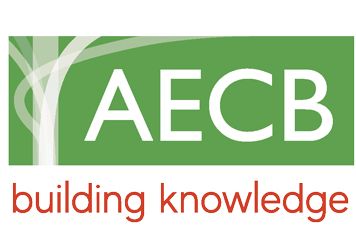
- Blogs
- Posted
Out of the blue - a passive revolution
This article was originally published in issue 47 of Passive House Plus magazine. Want immediate access to all back issues and exclusive extra content? Click here to subscribe for as little as €15, or click here to receive the next issue free of charge
Over the past seven years, as I've penned this series of articles, I have documented the unfolding progress of solar housing, renewable technologies, building technology, and the emergence of environmental policies. Our present construction landscape bears the imprint of a rich tapestry woven by pioneers, researchers, authors, legislators, and architects. Today, both in Ireland and the UK, we stand capable of constructing and renovating A-rated, energy-positive, and passive standard houses.
At the dawn of the new century, the Kyoto Protocol had just been inked in 1998, gradually integrating into the EU Directive on the Energy Performance of Buildings by 2002. While the UK had responded to the first oil crisis in 1974 with the introduction of building energy standards, Ireland, in contrast, only adopted Part L energy conservation in buildings regulations in 1997. These standards, mirroring draft elective standards from 1974, marked a significant statutory stride but demonstrated little environmental ambition. By 2002, both nations were refining elemental standards for dwellings, with Ireland introducing Building Energy Ratings (BERs) via the DEAP calculation method, and the UK employing the SAP method. The industry transitioned from elemental performance to assessing the overall performance and energy consumption of fixed loads in buildings. The DEAP & SAP methodologies evolved from the pioneering energy calculation methods showcased at Energy World in Milton Keynes in 1985. BER certificates were more user-friendly, replacing elementally focused design approaches, thus highlighting a transformative shift in building regulations and providing a clear indication of how energy efficient one's home was at a glance.
Amidst this backdrop, a young landscape architect embarked on constructing a pioneering low energy house near Brittas Bay, Wicklow, south of Dublin. Inspired by Harold Orr's Saskatchewan House (1977) and Wolfgang Feist's pioneering passive house in Darmstadt (1991), Tomas O’Leary erected Ireland and the UK's first passive house in 2004.
Drawing from the solar housing insights of the 1960s, the house optimised its orientation to the south for passive solar heat gain in winter. Super insulation, akin to Wayne Schick’s Lo-Cal house (1974), minimised heat loss.
Frank Lloyd Wright's Usonian Houses (1937) informed the shading elements, while achieving an airtightness of 0.6 air changes per hour at 50 Pascals set new standards heretofore not seen in Ireland. Heat recovery ventilation and a pellet boiler supplemented the passive approach. Despite its 350 m² size, the house's 2008 heating bill totalled a mere €250 annually, equivalent to €0.71c/m²/yr or £0.61p/m²/yr.
In 2010, a BER assessment yielded a highly respectable A3 rating for the six-year-old house, reflecting its energy efficiency and good design. In 2023, to mark the 20th ‘birthday’ of the house, Tomas added a 6.5 kWp PV system which recovers two-thirds of the combined regulated and unregulated loads on an annual basis. Tomas's advocacy of passive house design helped catalyse a shift towards low energy building in Ireland and the US, steering industry practices towards passive house principles.
While passive house and building regulation approaches coexist, passive house standards demand rigorous adherence to higher standards encompassing shading, mechanical ventilation, airtightness, and thermal bridges. Though building regulations are progressing, the validity of BER as a desktop calculation, rather than a reflection of actual energy consumption, limits its relevance in the era of energy-positive buildings.
In retrofits, the BER may offer a more practical and cost-effective solution than passive house Enerphit, which requires substantial structural modifications to attain the necessary airtightness. Achieving an A1 BER rating is primarily feasible through external interventions, as demonstrated by RUA Architects’ renovation of a 1982 bungalow in early 2024. This approach minimises disruption to occupants while mitigating the loss of embodied energy. Tomas O'Leary's 'Out of the Blue' passive house helped spark a paradigm shift in the construction industry, inspiring a second wave of industry pioneers to turn to passive house to deliver that most elusive of things: genuinely low energy buildings. It was the success of these projects that led this magazine’s progenitor, Construct Ireland (for a sustainable future), which had been founded in 2003 as Ireland’s first green building magazine, to become Passive House Plus and, encouraged by the AECB, expand into the UK in 2012.
Ireland’s first passive house was a catalyst, which heralded a significant amount of upskilling of designers and tradespeople in passive house courses, the rise of new manufacturers, business models, and the delivery of superior quality homes across Ireland and the UK. In the next issue, we will delve deeper into the impact of building energy ratings and the evolution of low-energy retrofit strategies.




